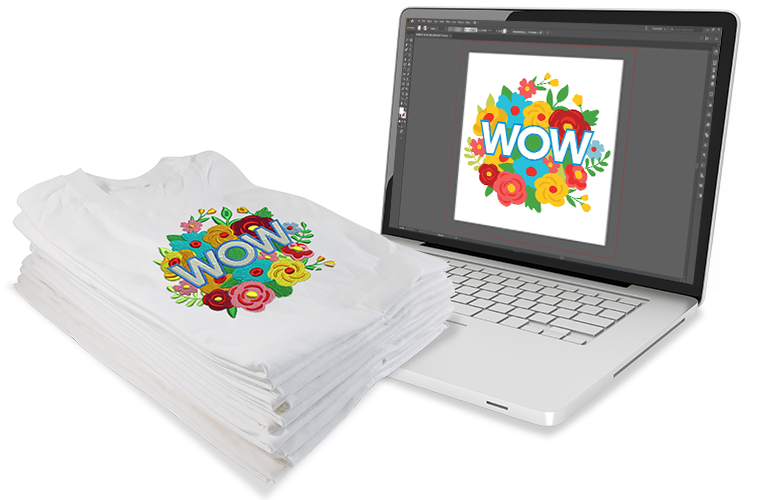Expert Digitizing for Embroidery: High-Quality Styles
Expert Digitizing for Embroidery: High-Quality Styles
Blog Article
Streamlining the Art of Embroidery Digitizing: Step-by-Step Guide
Needlework digitizing is a thorough craft that demands precision and creative thinking. As modern technology remains to development, the digitization process has come to be extra easily accessible, enabling enthusiasts to bring their detailed styles to life with simplicity. In this guide, we will certainly untangle the complexities of embroidery digitizing, damaging down each step carefully to simplify the procedure and equip both beginners and skilled embroiderers alike. Stay tuned to uncover exactly how you can simplify this detailed art type and transform your imaginative visions into beautifully stitched masterpieces.
Recognizing Embroidery Digitizing Software Application
Needlework digitizing software application functions as a critical device for changing elaborate layouts into digital layouts compatible with needlework equipments, facilitating exact stitching and personalization. This customized software allows customers to import various image data layouts, such as JPG or PNG, and transform them into embroidery machine-readable styles like DST, EXP, or PES - Digitizing for Embroidery. By using functions like stitch modifying, padding options, and thread shade option, digitizing software application allows individuals to regulate every aspect of the style procedure
In addition, progressed embroidery digitizing software provides tools for producing complicated styles, changing stitch thickness, and integrating complex information. Customers can additionally sneak peek the style prior to stitching it out, making sure precision and lessening mistakes. In addition, lots of software application give automated attributes that assist enhance the digitizing process, saving time and effort.
Understanding the capabilities of needlework digitizing software program is essential for achieving high-quality lead to embroidery tasks. By mastering this tool, embroidery enthusiasts and specialists can release their imagination and bring intricate designs to life with accuracy and effectiveness.

Selecting the Right Design File
After acquainting on your own with the capacities of needlework digitizing software program, the following important step in the process is selecting the appropriate style declare your project. Digitizing for Embroidery. When choosing a layout documents for needlework digitizing, it's necessary to think about the complexity of the design, the dimension of the last product, and the sort of textile you will certainly be collaborating with
For elaborate designs with great information, a high-resolution picture or vector data is recommended to make certain that the needlework maker can precisely recreate the layout. In addition, the dimension of the end product plays a considerable function in picking the ideal style file. Bigger designs might need greater resolution data to maintain quality and sharpness.
In addition, the kind of textile you will be embroidering on influences the selection of style file. Various textiles may need adjustments in the layout file to guarantee that the stitches are effectively aligned and the style shows up as planned. By thoroughly choosing the best layout documents based on these elements, you can set on your own up for an effective needlework digitizing process.
Digitizing Tools and Methods
Making use of specialized software and precision methods, digitizing devices are important in transforming complex designs view it into embroidery-ready documents. Embroidery digitizing software, such as Wilcom, Hatch, or Embrilliance, offers the needed system to transform art work right into stitch information. These programs supply functions like stitch modifying, rug choices, and text tools to make sure the style equates effortlessly onto textile.
One of the essential methods in digitizing is producing a clear path for the embroidery device to follow. This involves digitizing each element of the design with accuracy, determining stitch types, thickness, and instructions. By making use of devices like digitizing tablets or software-specific plugins, embroiderers can accomplish a high level of precision in their digitized styles.
Moreover, grasping the art of underlay sewing is critical for generating high quality embroidery. Underlay stitching maintains the fabric and creates a structure for the style, guaranteeing that the final product is both aesthetically attractive and resilient. By understanding these digitizing devices and strategies, embroiderers can raise their craft and bring elaborate designs to life with accuracy and effectiveness.
Customizing Stitch Kinds and Instructions
The selection of stitch kinds can considerably influence the overall appearance and appearance of the embroidered style. By purposefully combining these stitch kinds, embroiderers can achieve deepness and measurement in their designs.
In addition, the instructions of stitches plays an essential function in boosting the aesthetic allure of the last needlework. By exploring with various stitch angles and patterns, embroiderers can bring their styles to life with my link exceptional information and ins and out.
Testing and Refining Your Digitized Style
To make sure the accuracy and quality of your digitized design, extensive testing and refinement are essential action in the embroidery digitizing process. As soon as you have actually finished the digitization of your style, it is essential to evaluate it before continuing with the real embroidery. Evaluating allows you to identify any kind of possible problems such as thread breaks, stitch thickness issues, or design distortions that may affect the result.

After testing, it is very important to refine your digitized layout based upon the feedback from the test sew-out. This may entail tweaking sew setups, adjusting thickness, or making modifications to the overall layout to accomplish the desired end result. By repeating through screening and refinement, you can fine-tune your digitized layout to excellence before moving forward with the actual needlework process.
Conclusion
Finally, mastering the art of needlework digitizing needs a detailed understanding of the software application, selecting the best layout data, making use of digitizing tools and strategies, personalizing stitch kinds and directions, and screening and fine-tuning the digitized layout. By complying with these actions, embroiderers can simplify the digitizing procedure and produce high-quality stitched designs with precision and performance.
Report this page